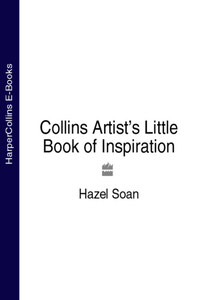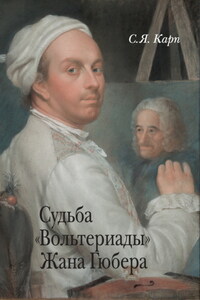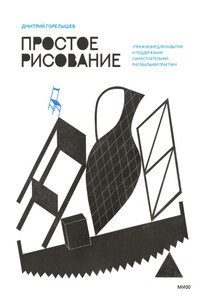Lake of Stars, 12 x 36 cm (41⁄2 x 14 in), oil on board
Copyright
Collins
An imprint of HarperCollins Publishers
1 London Bridge Street
London W6 8JB
The Collins website address is www.harpercollins.co.uk
Editor: Geraldine Christy
Layout Designer: Heike Schüssler
Photographer: Laura Knox
First published in 2008 by Collins
Copyright © Hazel Soan, 2001, 2008 Based on material from What Shall I Paint?
A catalogue record for this book is available from the British Library.
Hazel Soan asserts the moral right to be identified as the author of this work.
All rights reserved under International and Pan-American Copyright Conventions. By payment of the required fees, you have been granted the nonexclusive, non-transferable right to access and read the text of this e-book on screen. No part of this text may be reproduced, transmitted, downloaded, decompiled, reverse engineered, or stored in or introduced into any information storage retrieval system, in any form or by any means, whether electronic or mechanical, now known or hereinafter invented, without the express written permission of HarperCollins e-books.
HarperCollinsPublishers has made every reasonable effort to ensure that any picture content and written content in this ebook has been included or removed in accordance with the contractual and technological constraints in operation at the time of publication.
Source ISBN: 9780007274901
Ebook Edition © MARCH 2015 ISBN: 9780008144579
Version: 2015-11-19
Seeker on the Shore, 50 x 25 cm (20 x 10 in), oil on paper
Everybody Waits for Something, 28 x 45 cm (11 x 18 in), oil on canvas
Introduction
In a diverse and magnificent world we are inspired by both natural creation and man-made invention. Even the constant bombardment of images in the media has added to our visual repertoire. It is not just the picturesque that can move us to paint – everything and anything can interest us.
So how is it that, with all this pictorial wealth on offer, confrontation with a demanding sheet of all-too-white paper or a blank canvas often provokes the question: ‘What shall I paint?’.
The elements of painting
To be inspired to paint you need to know what a painting requires, so I have set this book out in three sections. The first section, ‘Finding Inspiration’, looks at the basic elements of a painting, what to look for in a subject and how to find it.
The second section, ‘Tools of the Trade’, looks at what we paint with and the surfaces to which colour is applied; the medium will influence the painting, and can have a bearing on your choice of subject. I have limited the scope of this book to watercolours, oils and acrylics, but most of what is said will apply to other media as well. The third section, ‘The Adventure of Painting’, puts your new-found vision into practice. Each chapter relates to different environments and explores the inexhaustible inspiration available.
There are chances throughout for you to put theory into practice with suggested projects. I also include some demonstrations. Soon you will find even the clutter on a table will inspire a painting or the queue at the bus stop will excite you to open your sketchbook!
Future Expectations, 43 x 56 cm (17 x 22 in), watercolour
Finding Inspiration
How do you decide what makes a good subject for a painting? You can rely on tried and tested themes, the timeless stalwarts that historically make good pictures: the bowl of fruit, the vase of flowers, the seated figure or portrait, or the classic view. But what about other ideas? Much around us, the details and small corners, the events that move us emotionally – these too are visually interesting, but not always immediately obvious to us as inspirational subjects for paintings.
‘Do not seek—find!’
Picasso
In the Beginning 71 x 102 cm (28 x 40 in), oil on canvas
Learning to see, learning to feel
‘… the artist has only to trust his eyes.’
Rodin
Most people probably accept there is nothing the artist cannot paint, but, even knowing this, still find it difficult to pick out from the view in front of them the inspiration for a good painting. They may go in search of a subject but find it wanting in some way, or compose their picture without real conviction because they are unsure of its worthiness as a subject for a painting.
In practice there are times when the desire to paint is strong, but it is difficult to find a satisfactory grouping of objects or a perfectly composed view to act as the catalyst to get started. What is it that actually kindles a painter’s interest?
Painting starts with seeing. We are easily attracted to pleasant groupings of objects: a setting in the landscape, the colours of flowers, a charming child or an interesting face. We are often struck by the effects of light and shadows.
The less tangible, such as atmosphere, mood, or an unusual incident, also engages the eye, while pattern, repetition and contrasts have strong visual appeal. Familiarity with the subject, a face we love, a memorable room, or food, can also stir us to reach for the paintbrushes.








